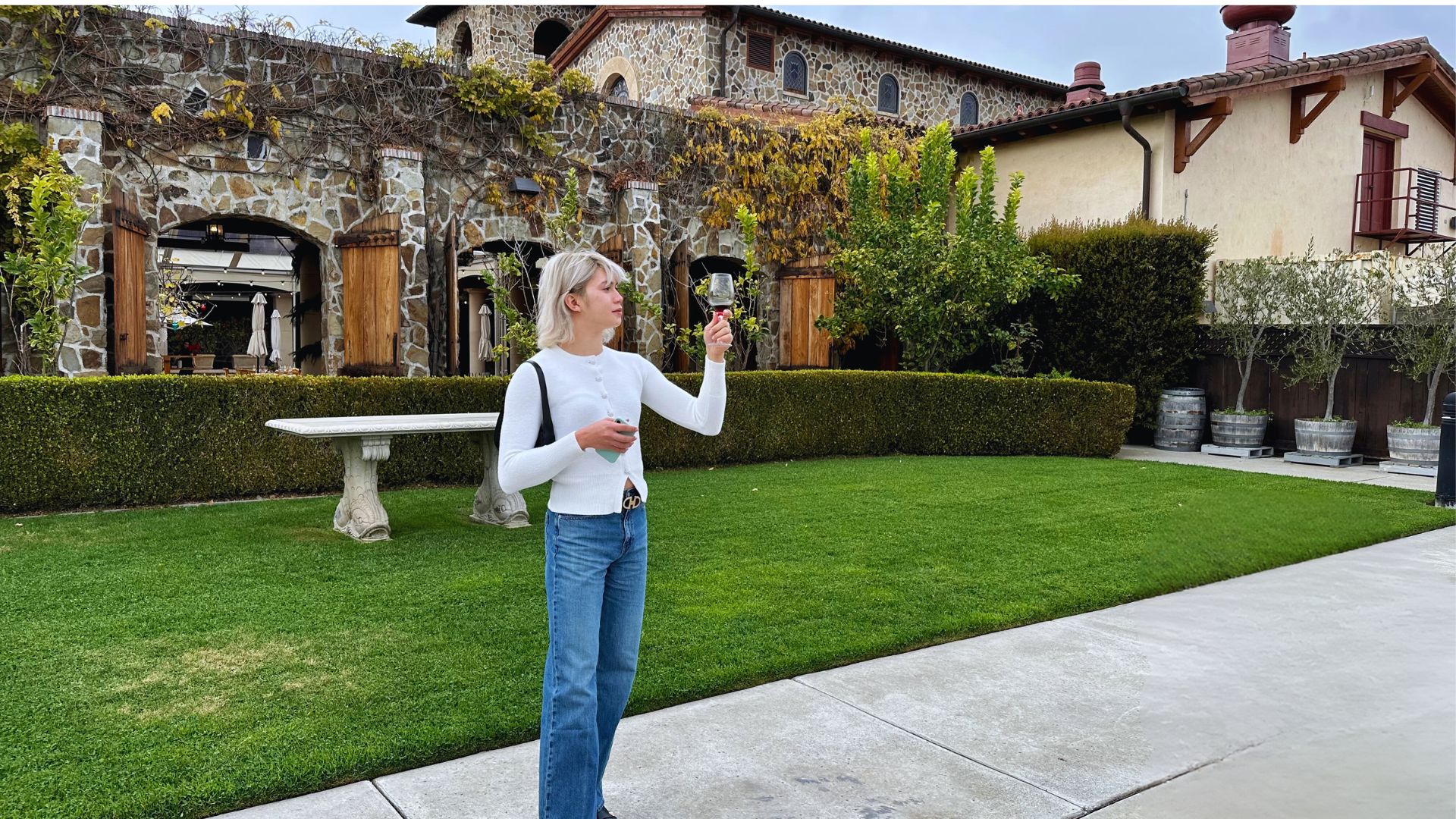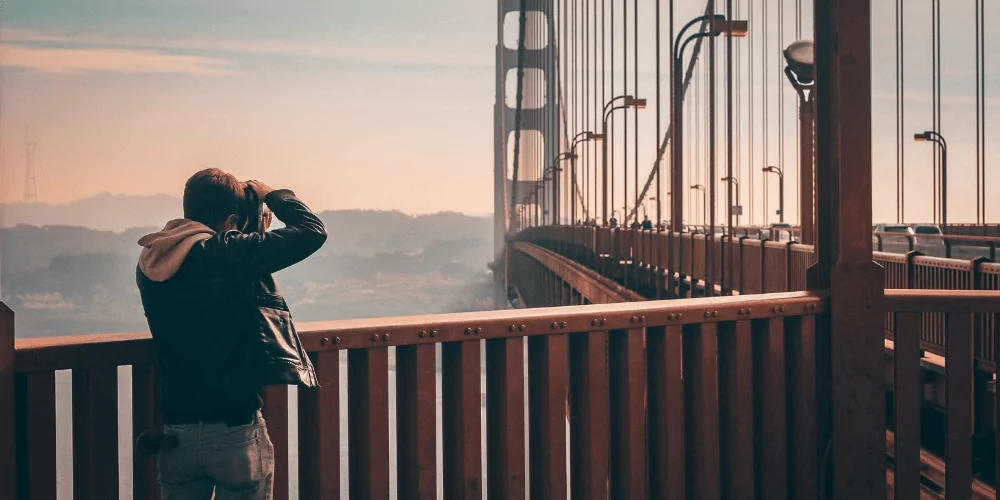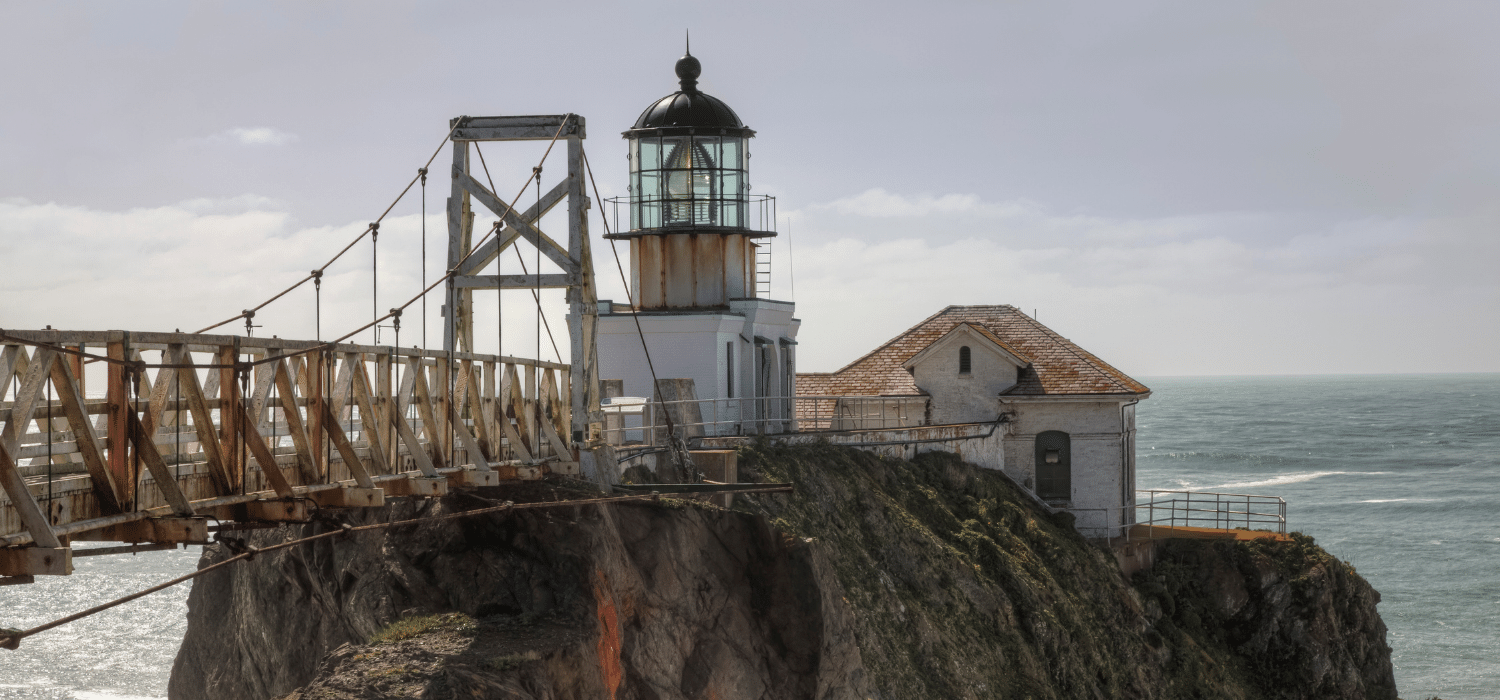You could spend years exploring the wonders of San Francisco without ever leaving the city, but we think that would be a mistake! Within just a couple hours travel from San Francisco are countless not-to-miss destinations. In fact, we think the day trips from the San Francisco Bay Area are the best around, and we will prove it to you.
Some of the best day trips from San Francisco include the granite monuments of Yosemite National Park, the giant redwood trees of Muir Woods, the wine lover’s paradise in Napa and Sonoma Valleys, the unforgettable beaches of the Pacific Coast, and the historic gold rush treasures in the Sierra foothills.
All of these destinations are close enough to the city to be enjoyed on day tours from San Francisco. But since most visitors will not have time to visit them all, we’ve put together this article to help you choose the best one for you and your travel companions.
Below we will introduce you to the 9 best one day trips from San Francisco and fill you in on what you need to know to enjoy your visit to each. Just click on the links below to find out more and start your adventure on one of many ideas for day trips from San Francisco.
- 1. Yosemite National Park
- 2. Muir Woods Redwoods
- 3. Napa and Sonoma Wine Country
- 4. Monterey and Carmel
- 5 Sausalito
- 6. Angel Island
- 7. North Coast to Point Reyes National Seashore
- 8. Pacific Coast Highway to Santa Cruz
- 9. California Gold Rush Towns
1. Yosemite National Park
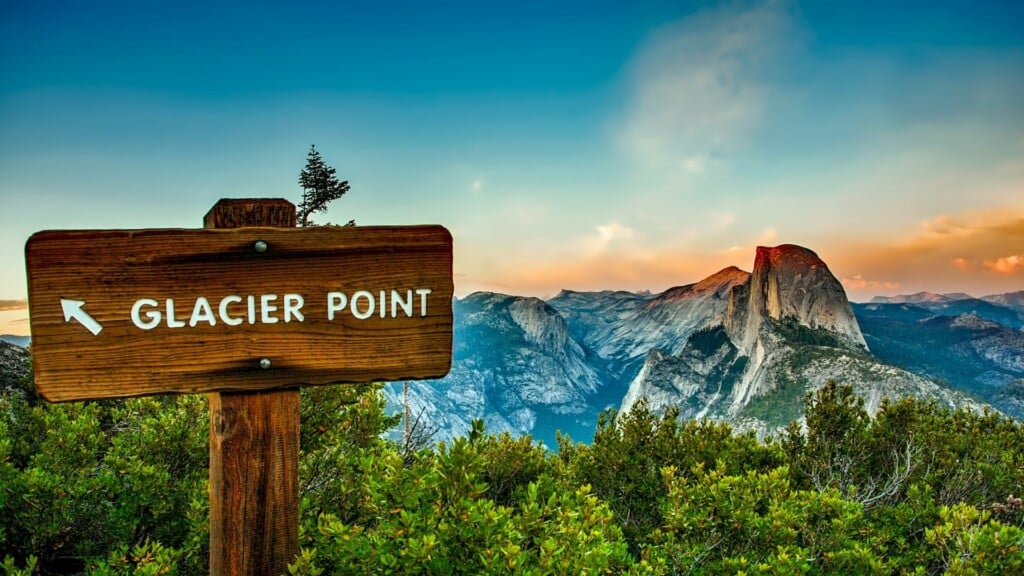
We admit that doing Yosemite National Park on a one-day trip from San Francisco is a bit of a stretch on your own, but it can be done! We couldn’t possibly leave it off the list, especially when there are such fantastic Yosemite day trips from San Francisco available.
While Yosemite National Park is an overwhelming 1,200 square miles, the most visited area is the 9-square-mile Yosemite Valley. This small area is simply packed with unforgettable views. The close proximity between a lot of the park’s must-see sights make this a doable day trip, especially with a knowledgeable guide.
If driving on your own, we recommend a stop into the Welcome Center when you arrive to learn about current conditions and any trail and road closures. If on a tour, your guide will know this important info ahead of time.
Must-see sights in Yosemite Valley include El Capitan, Half Dome, Yosemite Falls, Bridalveil Fall, Valley View, and Tunnel View. These can all easily be seen in one day. If on a longer tour, or staying more days, don’t miss Glacier Point and Sentinel Dome.
We also recommend visiting one of the Yosemite’s groves of giant sequoia. Mariposa Grove is probably the most visited, but Tuolumne and Merced Groves are also magical. Tuolumne Grove is a popular destination during the summer and fall seasons when its 2.4-mile scenic hiking loop is clear of snow and ice.
Yosemite: Know Before you Go
How far is the drive to Yosemite from San Francisco?
The most popular entry gates for Yosemite National Park are a 4-hour drive from San Francisco. Plan on another 45-60 minutes to reach Yosemite Valley and the Welcome Center.
Do I need reservations to enter and drive in Yosemite?
We strongly encourage you to check with the National Park Service to see what the reservation requirements are for the time you plan to visit. If you take a public tour to Yosemite, reservations will be made by the operator.
Can I drive to Yosemite from San Francisco in a day?
It is possible to make the 4-hour drive to Yosemite National Park, see the highlights like Yosemite Falls, Half Dome and El Capitan, and then return all in one day. Since the day is long and the driver cannot fully enjoy the scenery while driving, we recommend taking a public or private tour that includes a driver and guide for the best experience.
Is a day long enough for Yosemite?
One day in Yosemite National Park is enough to take in the major attractions located in the valley. For visitors traveling from San Francisco to Yosemite, an overnight stay is probably required to see Glacier Peak, Tuolumne Meadows, Vernal Falls and other more remote attractions.
When is the best time to visit Yosemite?
Yosemite National Park is open 365 days a year and each season offers unique experiences.
Spring is a favorite for seeing the waterfalls at their gushiest, and summer offers pleasant weather for sightseeing but tends to be crowded. Fall offers beautiful colors and usually enjoyable weather, and winter in Yosemite allows for snow sports and outstanding photo opportunities.
2. Muir Woods Redwoods
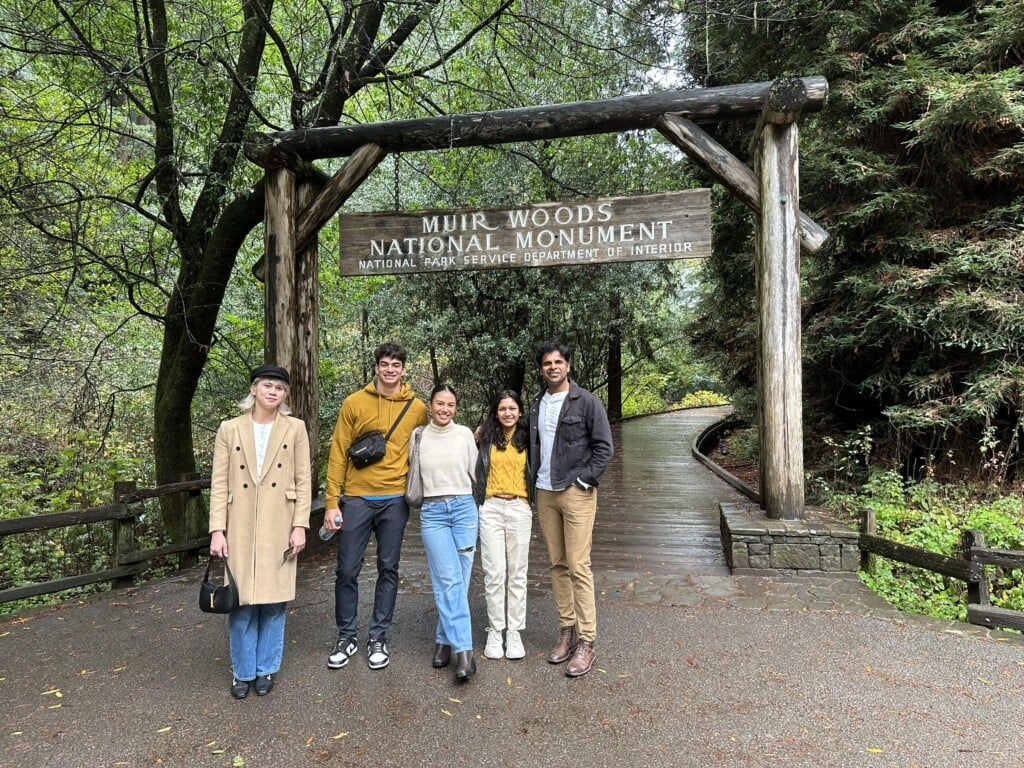
Just a short drive from the north end of the Golden Gate Bridge are the giant trees of the Muir Woods National Monument. Its proximity to the city makes this a popular park, but we think Muir Woods is still one of the absolute best one day trips from San Francisco, despite the crowds.
These coastal redwood trees are the tallest living things on the planet! Muir Woods is one of the handful of places to see giant redwoods near San Francisco. These natural wonders of Muir Woods range in age from 400 to 800 years old. They are truly survival experts!
The park’s gentle walking trails put visitors in close contact with the 250-foot-tall redwoods. A Day Trip to Muir Woods would be incomplete without visiting Cathedral Grove. It gets this name because it feels as though you are in a magnificent natural church made of trees. Also make sure you see Bohemian Grove, which was the original meeting place of an elite society of San Franciscans.
Lying slightly to the west of Muir Woods is Mount Tamalpais State Park. This beautiful park could be visited on a day trip of its own, or easily combined with Muir Woods. It offers 60 miles of moderately-strenuous hiking trails under the cover of pristine redwood and oak forests.
From the 2,500-foot Mt. Tamalpais peak, on a clear day, hikers can see San Francisco and the Marin County Hills. The park is also home to the Mountain Theater (Cushing Memorial Theater): An open-air amphitheater which hosts a spring play, performed since 1913.
Those wishing to continue north up the Shoreline Highway from Muir Woods and Mount Tamalpais, will find Stinson Beach, a magically chill place that is well worth the trip. The beach has beautiful white sand and picturesque views of the Pacific coastline. Nearby Bolinas features the 40-foot-high Alamere Falls, for those willing to hike there. The quirky Bolinas Museum hosts lovingly-curated local art and photography.
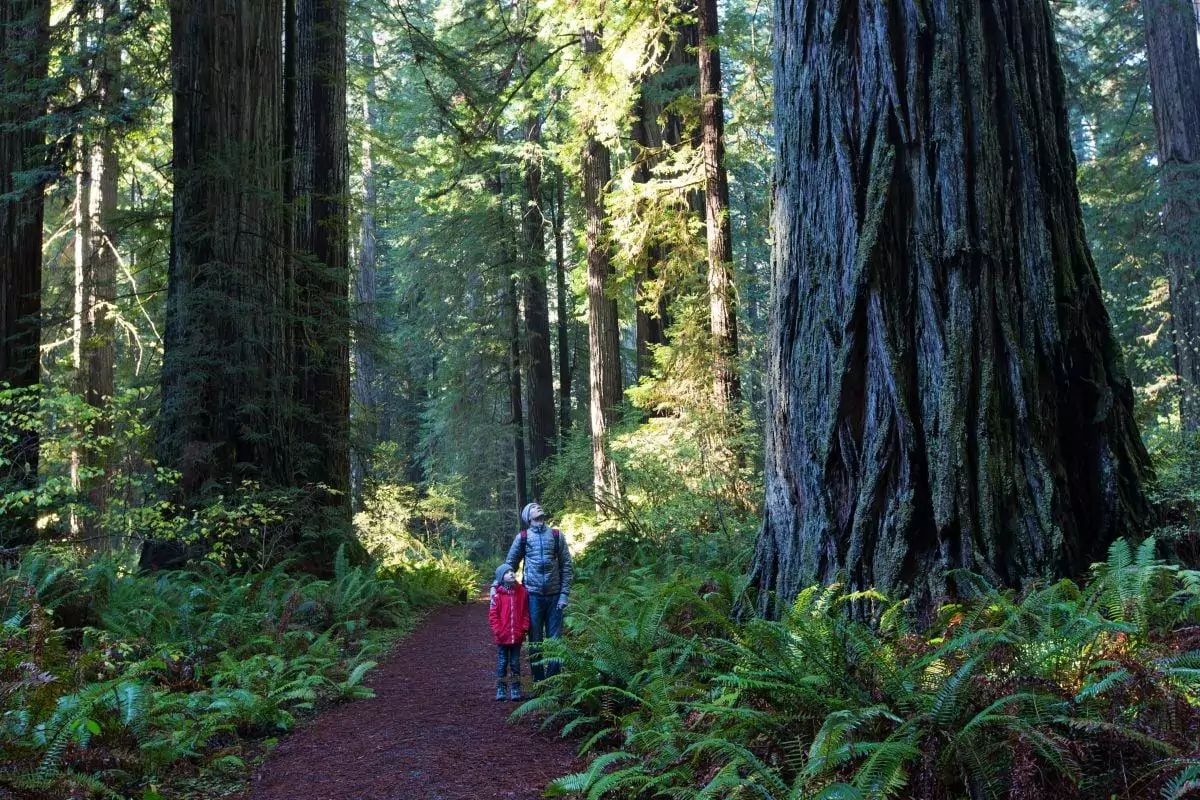
Muir Woods Redwood Forest and Sausalito Morning Tour
This is the only Muir Woods tour with guided audio narration inside the park. Walk under the world’s tallest trees, then enjoy charming Sausalito.
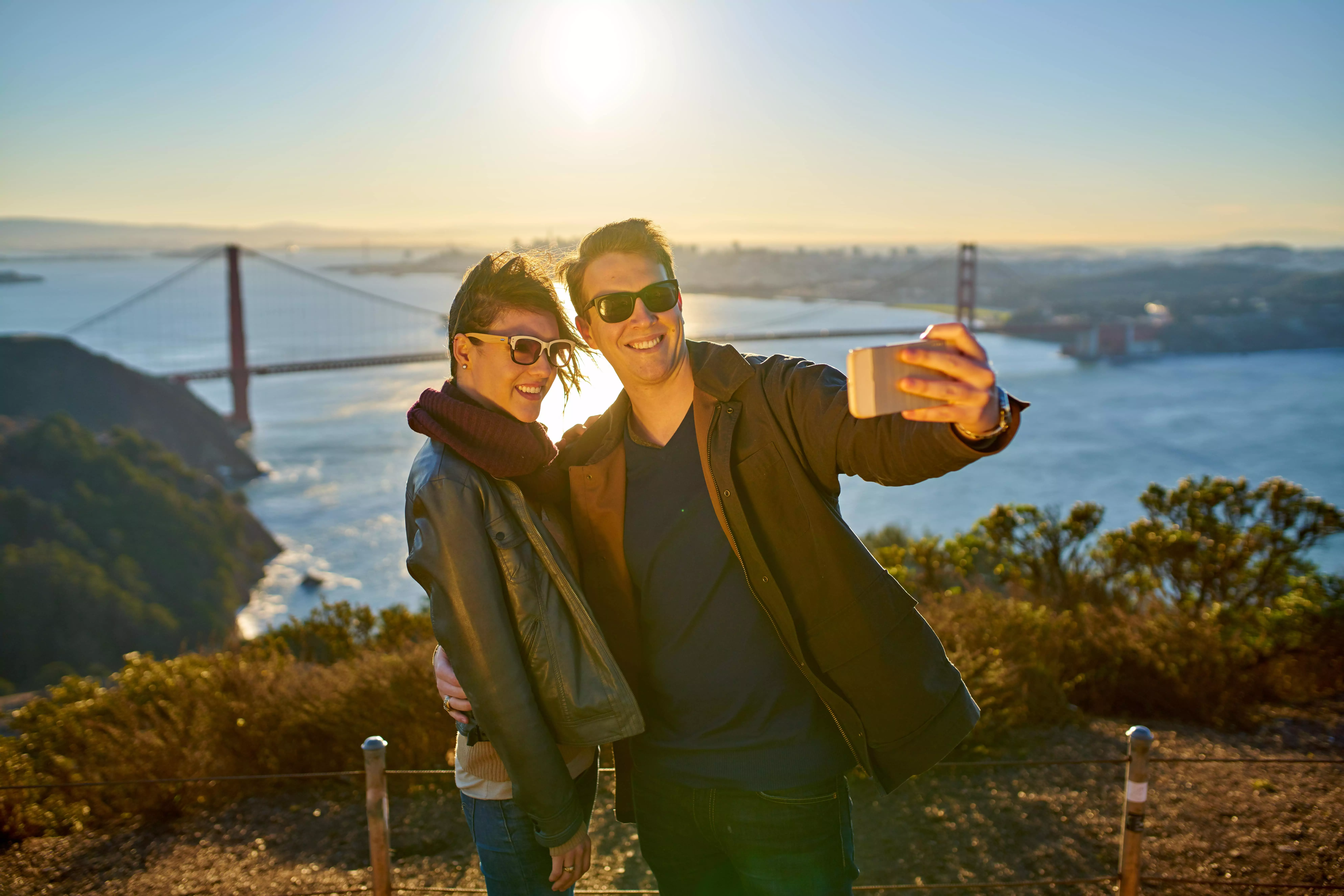
Morning Guided City Tour of San Francisco
Most complete and entertaining San Francisco city tour available. Stops to explore Golden Gate Bridge, Palace of Fine Arts, Land’s End, Twin Peaks and Mission Dolores.
Muir Woods: Know Before You Go
How far is Muir Woods from San Francisco?
Muir Woods is surprisingly close to San Francisco, just 40 miles from most downtown hotels. The roads are a bit slow going when you get close to the park, so plan on an hour of travel time. The proximity makes it perfect for a day trip from San Francisco.
What is the top thing to do in Muir Woods?
The top thing to do in Muir Woods is enjoy the trees! Take your time walking the trail along Redwood Creek to the Cathedral and Bohemian Groves of coastal redwoods.
What is the closest hiking or walking trail in Muir Woods?
The best walking trails begin right as you enter Muir Woods National Monument. There are helpful trail maps available at the entry gate. Most visitors walk the clearly-marked trail to bridge 3 or 4 and return to the visitor’s center near the park entrance.
3. Napa and Sonoma Wine Country
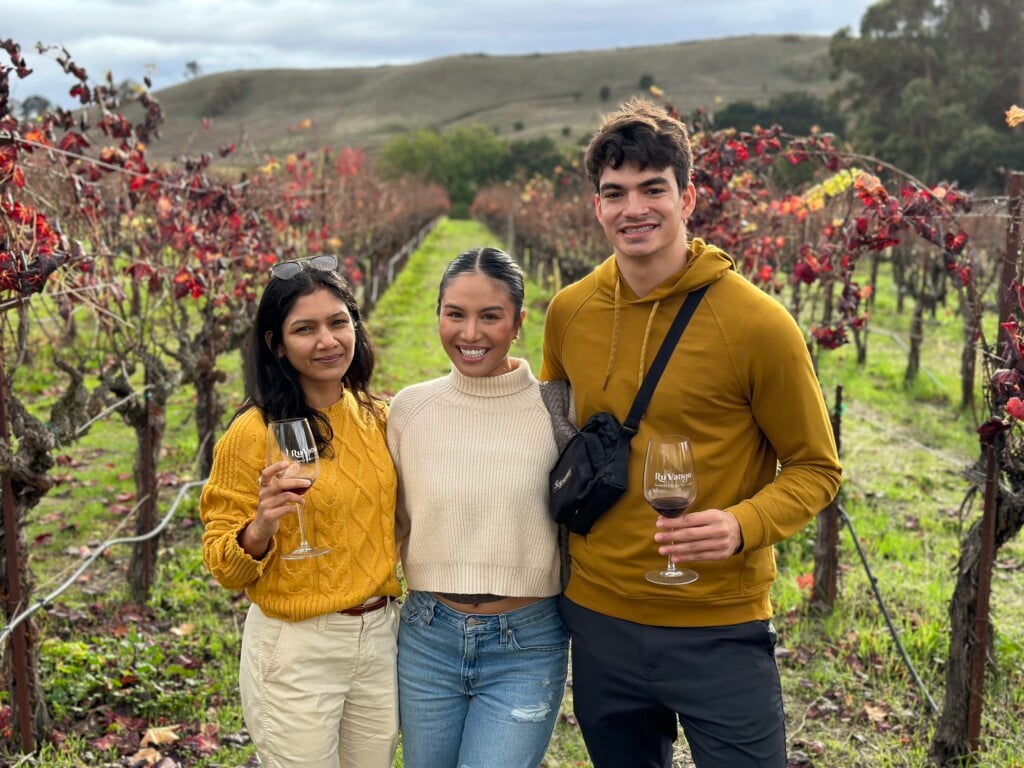
For wine lovers all over the world, Napa and Sonoma are bucket list destinations. Each valley can be explored on its own in a one day trip from San Francisco (or a week!), or they can be combined into one whirlwind day of fabulous wine and views. A day trip from San Francisco to Napa and Sonoma Counties will definitely be a trip to remember.
Napa
Napa is one of the original counties incorporated into California when it was granted statehood. The early settlers in the mid-19th century were mostly focused on farming grains and fruits until the first commercial vineyard was established in 1858.
Today, the number of Napa wineries has swelled to over 400, and this area has earned a world-class reputation. Napa is the more luxurious of the two wine regions, and your wallet will feel it. Splurge on a wine tasting or two and simply soak in the pristine views.
Be sure to visit Castello di Amorosa, a replica medieval winery with tours of their authentically built castle. Other Napa highlights include riding the Napa Valley wine train, soaring above the scenery in a hot air balloon, and melting into the Calistoga hot springs. It is hard to go wrong in Napa.
Sonoma
On the other side of the Mayacamas Mountain Range, Sonoma Valley has a different type of soil, and a more relaxed vibe. Where Napa feels glamorous, Sonoma is more casual, rustic, and offers wine tasting day trips from San Francisco at a more affordable price.
Sonoma is home to many charming small towns. Wander artsy Sebastopol, slow down in charming Guerneville, and go back in time in the historic Healdsburg Plaza. Sonoma is known for their excellent farm-to-table restaurants, so make sure you try one or two.
If you have a bit more time to spend in Sonoma, head to close by Armstrong Redwoods State Reserve for a dose of giant trees, or pop over to the ocean for stunning shoreline vistas. Sonoma offers endless opportunities to enjoy the simplicity of the outdoors.
Napa and Sonoma Wine Country: Know Before you Go
How far is the wine country from San Francisco?
The southern end of Napa Valley is 48 miles from downtown San Francisco via the Bay Bridge. Sonoma is a similar distance when taking the Golden Gate Bridge through Marin County.
Can you do both Napa and Sonoma in a day?
Yes, you can see both Napa and Sonoma wine country on the same day. Since there are only a few roads connecting the two areas, make the most of your time by including just one crossing in your itinerary.
This one-day trip can seem a bit rushed, especially when you are worried about your own transportation. Leave the worry and planning to us and enjoy one of our wine country day trips from San Francisco.
How far apart are Napa and Sonoma?
Napa and Sonoma are long north-south valleys near San Francisco. The Mayacamas Mountains separate them. You should plan on 30 minutes to cross from one to the other on weekdays, and a little extra time on weekends.
4. Monterey and Carmel
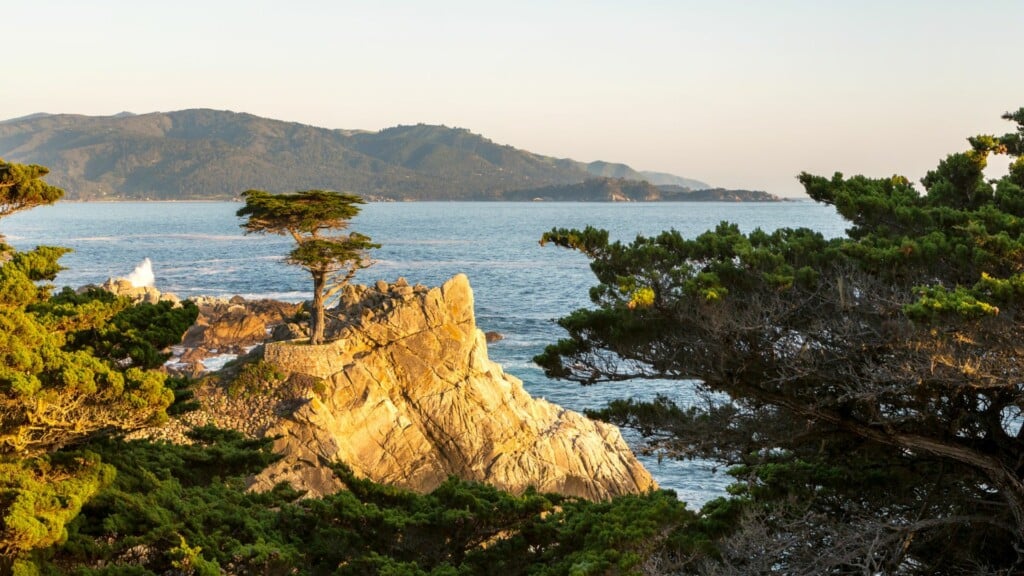
An area rich in sea life, Monterey once housed an industry dedicated to sardine fishing and canning. The large warehouses, bars, and bordellos that once made the district known as Cannery Row have been replaced by high-end waterfront dining, shopping and entertainment venues to thrill everyone in your group. It has all the makings of the perfect day trip from San Francisco.
Don’t miss the Monterey Bay Aquarium! It is one of the world’s most famous aquariums, with over 35,000 sea creatures from over 550 species. You could spend hours learning about and admiring the otters, sharks, jellies, and more that call this aquarium home. Don’t miss the entrancing kelp forest with its 28-foot tall viewing window, or the touch pools, which bring you up close and personal with rays, sea stars, and even sharks.
For an easy walk with ocean views, try a portion of the Monterey Coastal Trail. This paved, multi-use trail has fantastic views all along, with opportunities to see seals, otters, and other marine life in their natural habitat.
To drive from Monterey to Carmel, take the 17-mile Drive. This meandering coastal road is lined with cypress trees and Monterey pines. The most famous of them is the Lone Cypress. The 250-year-old tree sits alone on a rock facing down the Pacific Ocean, making for a perfect photo op.
From Cypress Point, visitors may see harbor seals delivering their newborns in the spring. Spanish Bay and Point Joe are lookouts where the history of California comes alive amidst the natural beauty of the islands. And most importantly, there is the close-up tour of the luxurious houses lining the route. If you are a golfer, don’t miss the Pebble Beach Golf Links.
Once you reach Carmel-by-the-Sea, relax and enjoy this European-inspired artistic community. Wander the white sand beach and then grab a bite to eat and a glass of wine at one of the fabulous restaurants. Admire the cottage-like buildings as you make your way from courtyard to courtyard through hidden passages, popping into galleries full of handmade local art.
If visiting the Carmel area from January to April, consider a side trip a bit further south to Garrapata Beach to find the calla lilies. The valley here explodes in white lilies this time of year, and it is truly a magical sight.
Monterey & Carmel: Know Before you Go
How far is Monterey from San Francisco?
When taking the most scenic route along Highway 1, Monterey is 116 miles from Union Square in San Francisco. With moderate traffic, the trip takes about two and a half hours.
Do you have to pay for the 17-mile drive?
Yes, there is a charge of $11.75 per vehicle to enter the 17-Mile Drive in Pacific Grove. The gate fee is reimbursed with a purchase of at least $35 at most Pebble Beach Resort restaurants. The fee is usually included in the price of public tours and private charters.
Is it worth visiting Carmel-By-The-Sea?
The charming community of Carmel is definitely worth a visit. Even if you don’t spend a lot of time in Carmel itself, the beautiful 17-mile drive from Monterey makes the trip worth the effort.
5. Sausalito
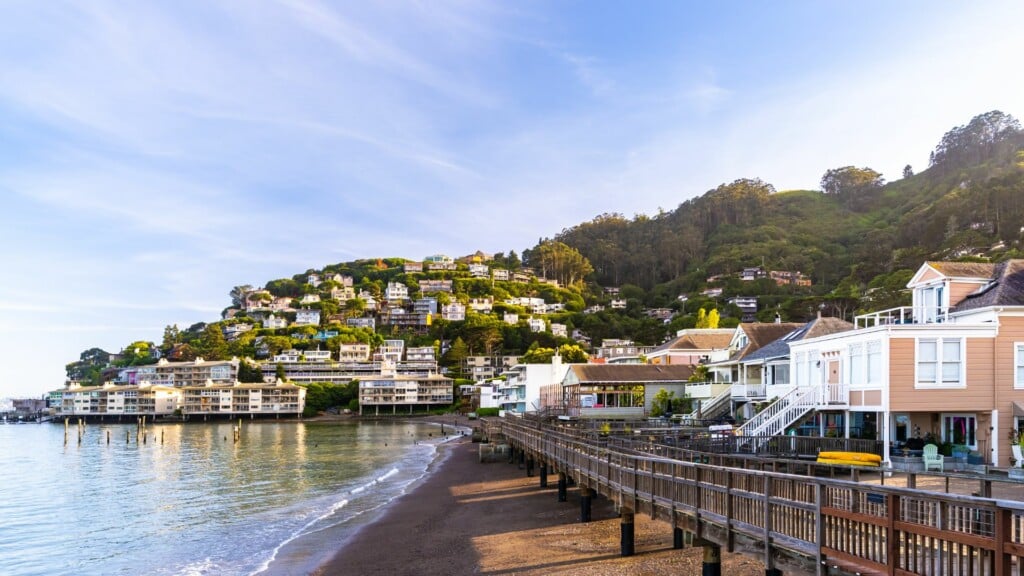
Let’s begin with the closest day trip from San Francisco. Although only a 20-minute drive from the city, when you are in Sausalito, you will feel a world away.
Charming Sausalito offers a delightful mix of dining, shopping, and beach strolling. The secluded cove of Rodeo Beach is one of the best beaches on the entire bay. With just a few hours in Sausalito, visitors can enjoy the Marine Mammal Center, Bay Area Discovery Museum, and San Francisco Bay Model, which teaches visitors about the tidal waters of the Bay.
Up and down Sausalito’s main shopping thoroughfare you can find a wide array of tasting rooms, sweet shops, and great restaurants. Above all, be sure to leave room for Lappert’s Ice Cream: a family-owned cafe serving up flavors of ice cream that will transport you to the tropics.
For an even more laid back beach town close by, venture over to Tiburon. This small town offers unique shopping, local restaurants, and great views. Take a selfie at Lyfort Tower, shop for souvenirs out of converted houseboats on Ark Row, and then take the convenient ferry to Angel Island (more on this stop next!).
Sausalito: Know Before you Go
How far is Sausalito from San Francisco?
Sausalito is only 10 miles from Downtown San Francisco, making it very ideal for a day trip from San Francisco. It sits on the West side of the Bay, just on the other side of the Golden Gate Bridge.
How to get from San Francisco to Sausalito?
You can easily drive to Sausalito if you have your own car. If you don’t want to worry about parking, ride shares like Uber and Lyft can get you there quickly and relatively cheaply. Public transportation to Sausalito is also a great option. Hop on a ferry at the SF Ferry Terminal or catch bus 130 toward San Rafael.
6. Angel Island
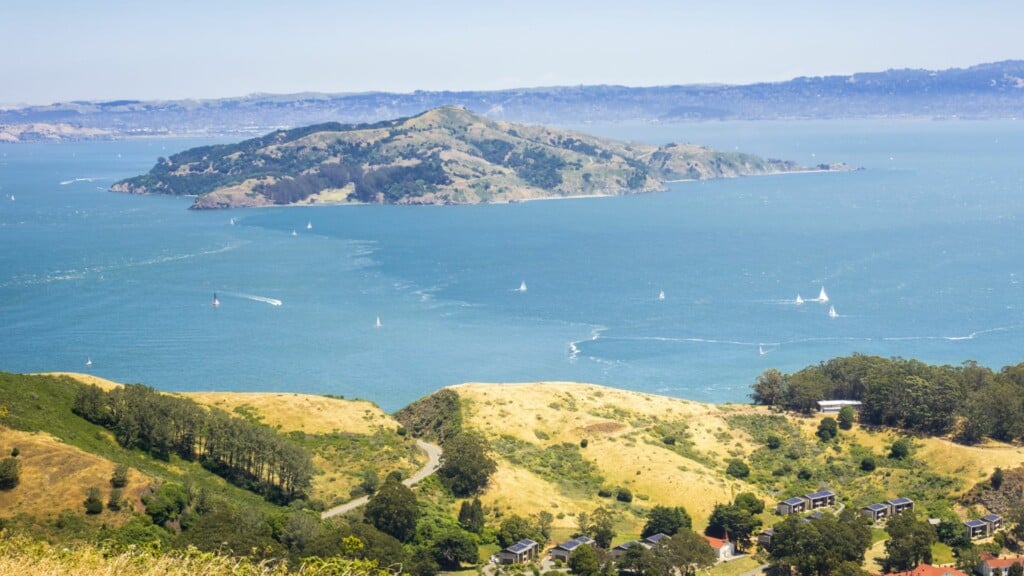
While technically even closer to San Francisco than Sausalito, a visit to Angel Island requires a boat ride, making it seem like a bit more of an adventure. A visit to this jewel in the Bay is filled with history, nature, and spectacular views of the City.
Angel Island’s role in San Francisco history is long and varied. Angel Island has been a base for Spanish explorers, a storehouse for hunters, a Civil War military post, an immigrant processing area and more. Today, the immigration station and two buildings within the old military barracks are still accessible for guided tours.
Visitors to Angel Island should head over to the Angel Island Café and order The Way Down South: a specialty sandwich made with Snake River pork and secret sauce. For the perfect after meal stroll, walk part or all of the road encircling the island for beautiful Bay and City views.
Angel Island: Know Before you Go
How far is Angel Island from San Francisco?
Angel Island is only a mile or two from San Francisco Embarcadero waterfront, but sits in the middle of the bay. To get to Angel Island, just hop on a ferry from San Francisco Ferry Terminal or Tiburon.
How long is the walk around Angel Island?
The paved Perimeter Road around Angel Island is 5.5 miles long, so casual walkers can complete it in about 3 hours. There are hiking trails leading to the summit of Mt. Livermore which adds 2-3 miles to the hike and a couple of hours to the day.
How long is the ferry ride from San Francisco to Angel Island?
The ferry from San Francisco ferry terminal on Pier 1 to Angel Island departs four times per day and takes about 30 minutes. Be sure to leave enough time to purchase your round trip ticket and get onboard well before departure time.
7. North Coast to Point Reyes National Seashore
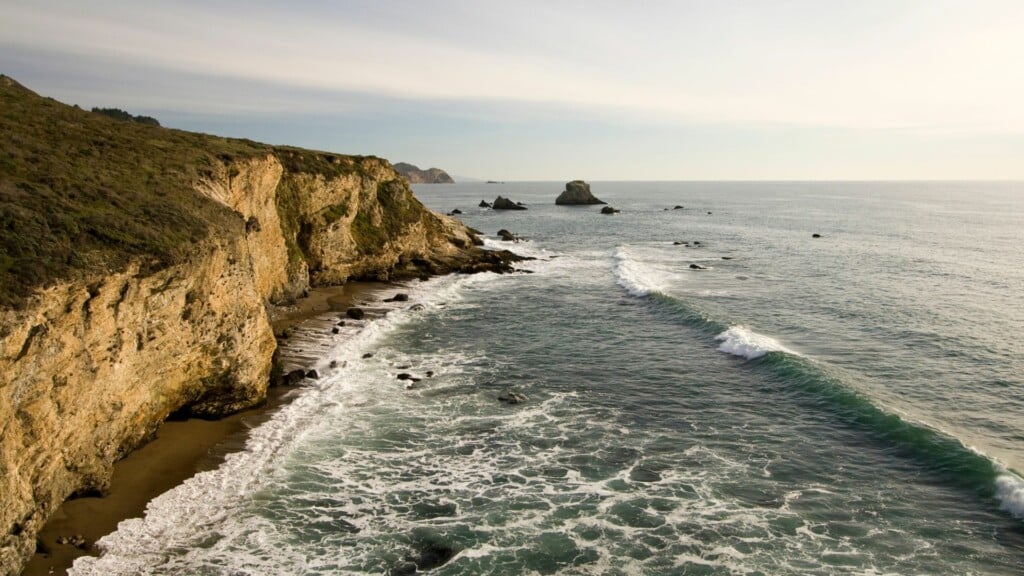
Point Reyes National Seashore is the only federally-protected span of coastline in California. Pressure from the Sierra Club to protect the Cape resulted in the area being set aside for conservation by President Kennedy. Thanks to those efforts, visitors today can enjoy 100 square miles of untouched northern California coast on a one day trip from San Francisco..
From Sea Lion Overlook, it’s not uncommon to see spawning Coho salmon, elephant seals, or even migrating gray whales. Another activity that shouldn’t be missed is descending the 300 wooden steps to the base of the Point Reyes Lighthouse which offers surreal views through the blanket of fog that often shrouds the area.
Drop into the small town of Point Reyes Station. It offers one of the region’s most charming main streets, with buildings still retaining the same names as they did in the town’s early days. You will find The Old Creamery Building, the Livery Stable, and the Hay Barn, for example. The town also offers the region’s best lodging options if you decide to stay the night.
The rocky peninsula here creates a wind break for the powerful Pacific currents, making the waters of Tomales Bay among the calmest in the state. Tomales Bay is a great spot for kayaking and paddle boarding.
Tomales Bay is also home to the Hog Island Oyster Company. The hatchery raises all five edible oyster varieties in the Northern Hemisphere, and is responsible for some of the best dining experiences in the Bay Area.
Further up Route 1, Bodega Bay is another rocky peninsula that calms the Pacific currents and makes for an ideal boating spot. Sailing and hiking are especially popular here.
Point Reyes: Know Before you Go
How far is Point Reyes from San Francisco?
The Bear Valley Visitor Center at Point Reyes National Seashore is a 60-90 minute drive from downtown San Francisco. From the visitor center, it is another 45-minute drive to the Point Reyes Lighthouse and Sea Lion overlook. Before going, check with the park service. The road to the seashore is often closed during wetland repairs or sea lion pup season.
What is the best time of year to see whales at Point Reyes?
Point Reyes is one of the best places in California to spot gray whales. The best times to try are during their southward migration from September to October, or when the whales return north from February to April.
Where can I hike near Point Reyes?
There are many beautiful coastal trails and wetland hikes to enjoy in Point Reyes National Seashore. Our favorite is the Laguna trail which runs all the way to Santa Maria Beach. On your way to the lighthouse, be sure to take some photographs at the Tunnel of Trees.
8. Pacific Coast Highway to Santa Cruz
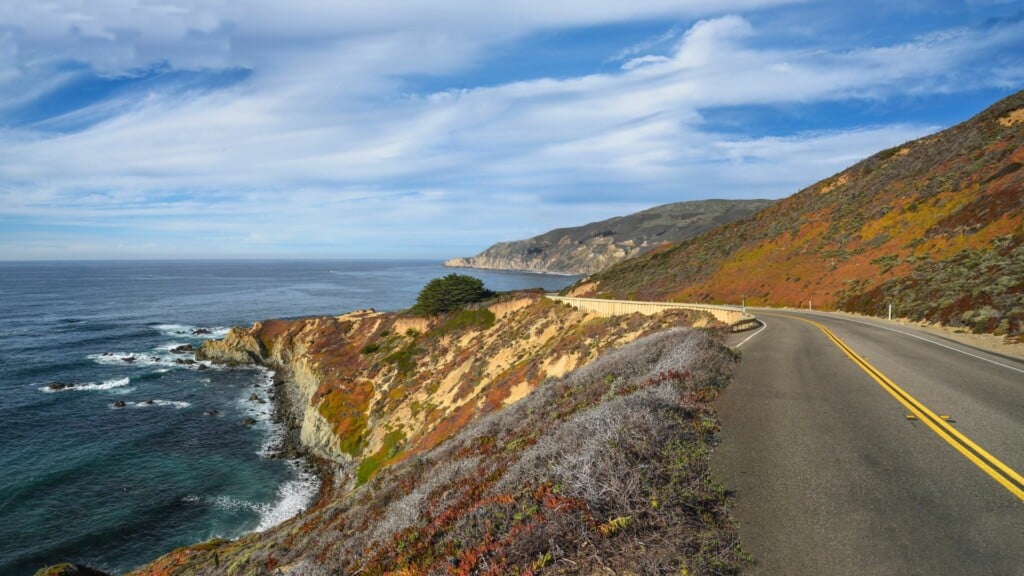
Now let’s explore South of the City, shall we? Just like up north, the coast south of San Francisco is dotted with gems waiting to be discovered. Each of the places mentioned in this route could be their own day trip from San Francisco, or a delightful pause in your road trip to Santa Cruz.
The Pacific Coast Highway, also known as California Route 1, connects every major city in California as it hugs the Pacific Coast. With its breathtaking views, it’s the journey, and not the destination, that makes it famous.
The first stop heading south from San Francisco is the coastal town of Half Moon Bay. Its bluffs provide vistas of the beautiful white beaches down below. If you visit in the fall, you will find Half Moon Bay offers specialty activities like u-pick sunflower fields and pumpkin patches.
On its southward trek, Highway 1 also passes some of the redwood forests closest to San Francisco, including Big Basin and Henry Cowell State Parks. Both are within a 75-mile day trip from San Francisco and provide enough trails for all day hiking.
A great way to see these trees is on the Roaring Camp Railroad. The narrated train tours are as authentic as they were in 1875 and are guaranteed fun for the whole family. The trains leave from the town of Roaring Camp, which was the site of the first sawmill west of the Mississippi River and acts as a living history museum today.
We have reached Santa Cruz! We recommend a stop at The Santa Cruz Beach Boardwalk. You will find an amusement park with forty rides, including two that are listed as National Historic Landmarks: The Giant Dipper wooden roller coaster and the Looff Carousel.
Another must-see near Santa Cruz is Natural Bridges Beach, named for the natural arch carved into a giant stone right on the beach. This state beach also has great tide pools, an assortment of shore birds like pelicans and cormorants, and a monarch butterfly migration reserve.
Santa Cruz: Know Before you Go
How far is Santa Cruz from San Francisco?
Santa Cruz is surprisingly close to San Francisco, about 75 miles from most downtown hotels. By the fastest route, Santa Cruz is about 1.5 hours from the city, but more like 2-2.5 along scenic Highway 1. We recommend you take your time on the drive, stopping to admire the views along the way.
Should I go to Santa Cruz or Monterey?
Tours to Santa Cruz and Monterey offer similar experiences: stunning coastal scenery, beautiful state parks, great restaurants, and lots of kid-friendly activities. For first timers, we recommend not missing Monterey (more on this below!). If you have the time, we recommend you do both.
How much are tickets to the Santa Cruz Boardwalk?
There is no charge to enter the Santa Cruz Beach Boardwalk. Individual rides are priced between $3 and $5 per ticket. If you plan on spending the whole day, the wristband for unlimited rides is a great deal.
9. California Gold Rush Towns
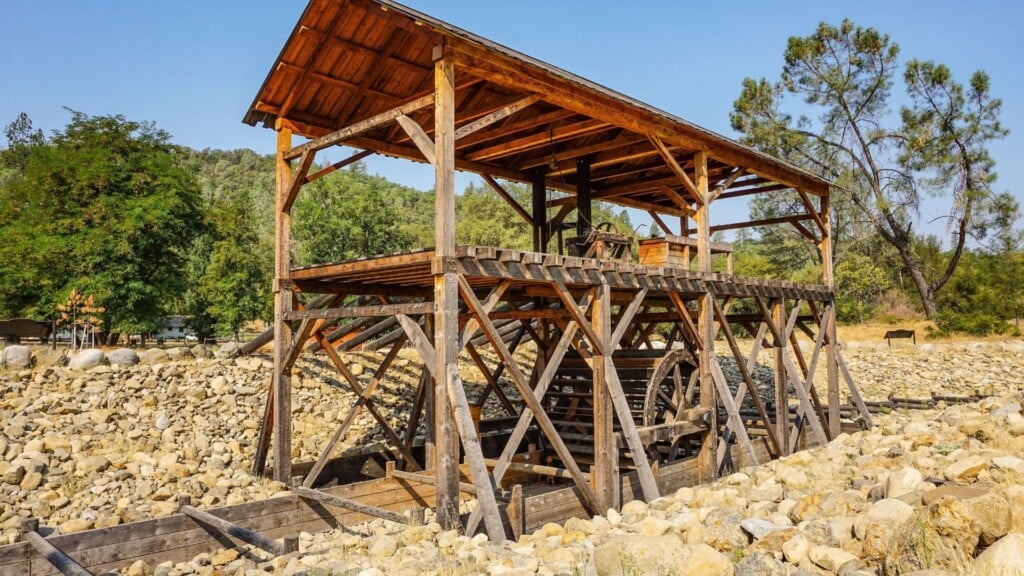
The 1849 California Gold Rush forever changed Northern California. History buffs, or anyone looking for a unique day trip from San Francisco, should consider a drive east to the gold rush towns in the Sierra Nevada Mountains.
A day trip from San Francisco to gold country should start with Marshall Gold Discovery State Park in Coloma (located east of Sacramento). Visitors can pan for gold, visit a re-creation of Sutter’s Mill, and hike at the foot of the Sierra Nevada range.
Many gold rush boomtowns in this area are full of historic charm and authenticity, but two in particular – Groveland and Columbia – make for the best day trips from San Francisco to gold country.
Groveland Gold Rush Town
Groveland boasts a historical main street straight out of a Wild West show. Groveland is home to the oldest continuously operating saloon in California: The Iron Door (circa 1853). Located just 25 miles west of the Yosemite Valley, Groveland acts as the gateway to Yosemite, with Groveland Yosemite Gateway Museum playing an integral part in preserving the region’s oral history including local Native American lore.
Columbia Gold Rush Town
A bit northwest of Groveland sits Columbia, CA. Columbia was once known as the “Gem of the Southern Mines” for the $150 million of gold that was mined here over a sixty-year period. Other towns in the region became deserted once the resources tapped out, but Columbia was saved from that fate by the historic preservation movement.
With historically-attired actors, gold panning, and the chance to ride in a period stagecoach, Columbia is considered one of the best living history museums. Tag along on one of their free walking tours, and then search for an artisan souvenir to remember your trip to this time-traveling town.
California Gold Rush Towns: Know Before you Go
How far are gold rush towns from San Francisco?
Groveland and Columbia are both nestled at the foot of the Sierra Nevada Mountain Range to the east of San Francisco. The drive to either will take just under 3 hours from San Francisco. The drive between Groveland and Columbia is 45 minutes.
Are the California Gold Rush Towns open year round?
Both Groveland and Columbia are open year round. While some activities, like Columbia’s town tours, will be more available in the popular summer months, many are continued throughout the year on weekends. The low season in Groveland offers snowshoeing in the High Sierras followed by a warming drink at the Iron Door.
Enjoy Your One Day Trip from San Francisco!
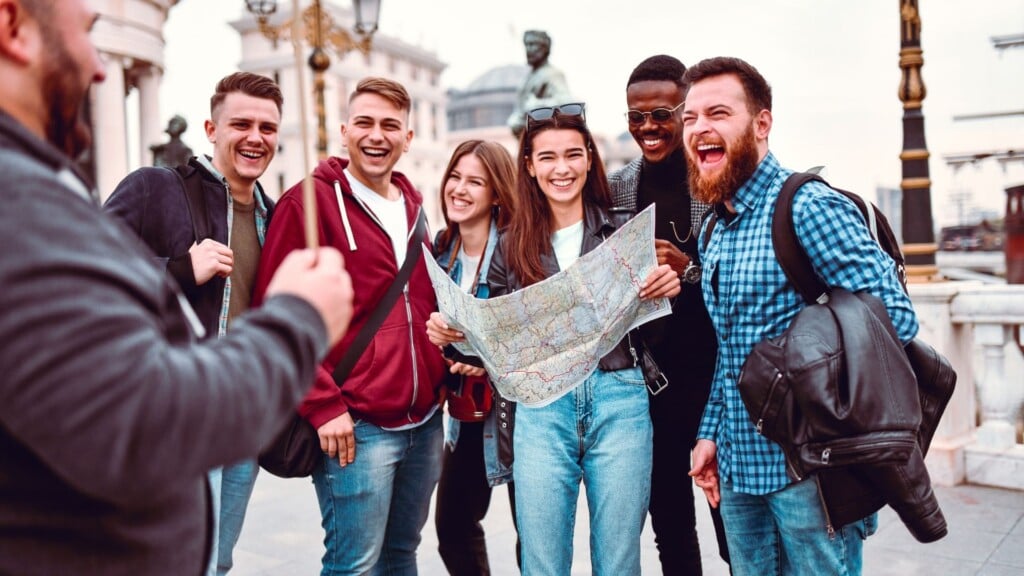
We hope this list of the best day trips from San Francisco Bay Area has been helpful! This list really just scratches the surface though. The dedicated could wake up early and make it all the way down to Big Sur, for example. If you want to check out one of the coolest college towns in the country, hop on over to Berkely. Tech fans could spend a whole day exploring Silicon Valley. The possibilities are endless.
Want to take one of these day trips from San Francisco without the transportation and planning hassle? Let our expert local guides show you the very best of Muir Woods and Sausalito, Monterey and Carmel, or Yosemite!
